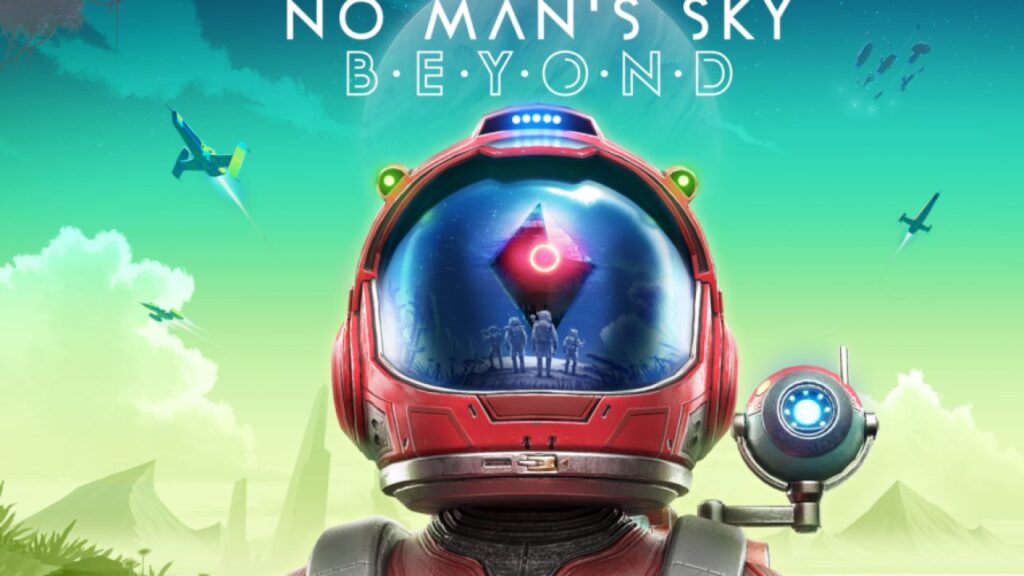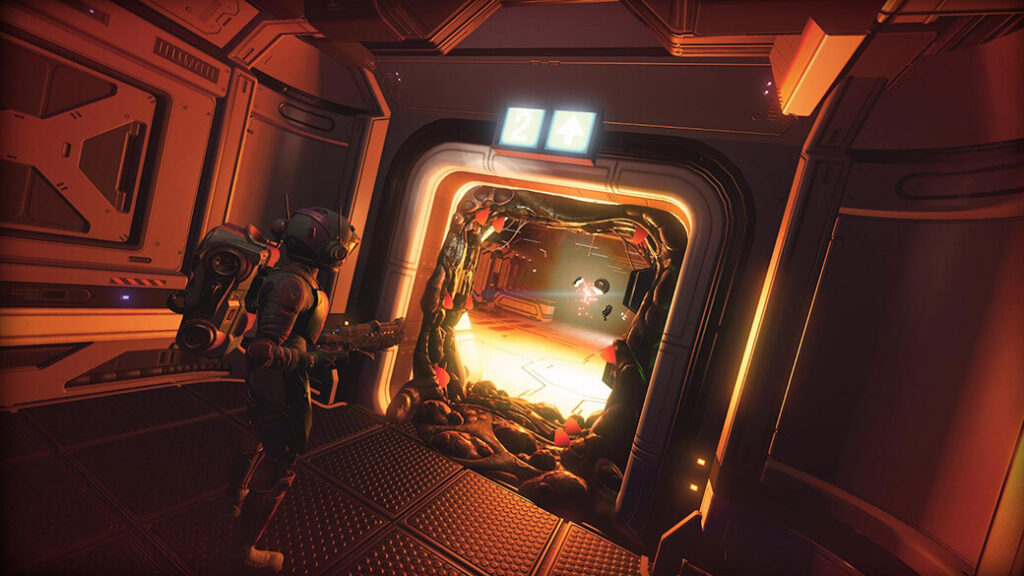
The aftermath of the flood
If you were watching E3 in 2014, chances are you were talking about No Man’s Sky in the coming months and years before it’s release on August 9th, 2016. That release was so abysmal that it is still talked about as one of the biggest letdowns to gamers everywhere in gaming history for the past decade or two. Many at the time compared it to Molyneux levels of disappointment, and rightfully so.
Promises were broken. Players that had talked it up for months prior and ridden that hype train felt betrayed, myself included. Understandably, refund rates were high and the sheer amount of hate the game received in the form of dismal reviews in both written and video form flooded the gaming news section of the internet for months.
These reviews were not universal, however. Some critics praised the game for its unique experience and incredible feats of engineering taken on by such a small team. I wanted to be part of that crowd, but truth be told I’m only finally revisiting the game after its latest update.
But to understand more about why the release was so bad, you need to know what Hello Games went through during development. It’s easy to call it every developer’s worst nightmare.
2013 – The Flood
Sean Murray, the face of No Man’s Sky, had done a good job leading Hello Games through a successful year in 2013. The small indie developer had great success with their first franchise, Joe Danger. While steadily keeping that franchise alive and profitable, the team was quietly working on something big and secret, something they’d take overseas to debut No Man’s Sky for the first time to the world at Spike’s VGX event on December 7th, 2013.
Needless to say, the premier event was a huge success and would serve to bolster the developer’s confidence that they had something good on their hands. It’s easy to imagine how nervous they were, stepping from smaller games like Joe Danger to something so incredibly ambitious other developers and players everywhere could hardly believe that it was possible to make such a game.
Then, just two and a half weeks later, on Christmas Eve, disaster struck.
A storm that was just too much for the nearby river caused flooding, and in the process, the studio was flooded. Computers, game console collections, and far more were all lost to the torrential waters that even seeped through the walls. As someone who has lost work and lost progress on a far smaller scale and still been disheartened (it’s rare an artist of some kind hasn’t felt this pain), I can only imagine how painful it was to hear this news.
Just imagine how much worse it would have been if they hadn’t had backups. They got PCs from neighbors, got a temporary site while the flooded one was cleaned and repaired, and got back to work on their project. After all, with few other prospects outside Joe Danger, an unbroken spirit, and a newfound camaraderie having gone through such loss as a team, Hello Games had no other options but to buckle down.
With this determination and unstoppable attitude, they would be the first indie developer to see the center stage at E3 in 2014.
Post-Release
Knowing all of this, it becomes a lot easier to imagine the absolute heartbreak Murray and his team felt when the game was released and people tore it apart. People called Murray a liar, compared him to Molyneux, and accused the team of trying for a cash grab. Many people who were angry and wanted vengeance threatened the team. They offered bomb threats and death threats, the individual team members faced harassment, and this led to them needing to be in constant contact with the police. As one can imagine, this made them pull away from the press and interacting with the public. Understandably, Murray doesn’t like to talk about it.
I saw it all firsthand, a person who had talked it up to so many friends and pre-purchased it in a time when I could barely afford to do so. That feeling of betrayal, feeling stupid for being lied to or taken advantage of, is heartbreaking.
“The internet is really good at knowing when somebody has made a mistake,” says Murray. “It’s not necessarily the best at determining the most appropriate response, but it’s really good at knowing when somebody has messed something up. We definitely messed up a whole bunch of communication. I’ve never liked talking to the press. I didn’t enjoy it when I had to do it, and when I did it, I was naive and overly excited about my game. There are a lot of things around launch that I regret, or that I would do differently.” – Murray, in an interview with The Guardian in 2018
“In the lead up to launch, oh my god, I would have chopped off my own arm to have more time,” says Murray. “We were under enormous pressure from the community and external forces. We were out of money. We were working so hard, way too hard. We’ve gotten much better balance in our lives now.
“[But] if we hadn’t released No Man’s Sky when we had, and I was sat down talking to you now after we delayed it for two years, we would not have a game as good as it is right now. Now and then you’ll see a comment thread where somebody will say: ‘It’s my favourite game of all time.’ That’s fantastic. I never expected to work on something that would have people saying that about it.”
I wanted so badly for it to be fun that I spent hours playing it on my wife’s computer (my computer couldn’t even handle it) before finally admitting that it wasn’t what I had been told it was going to be. I didn’t feel angry, just let down. It was everything I wanted in a game. An infinitely better Minecraft-style game set in endless space was what I was promised, and what we got at the time was a hollow shell of that promise that clearly needed more work.
Hello Games’ mistake in 2016 wasn’t making a bad game; it was failing to manage expectations when the hype started getting out of control. – Keza MacDonald
Now that we are on the same page as far as the developer’s history with the game, where is the game now and what did they do to right this wrong and save face?
Doubling Down
As soon as September 2nd, 2016, they released this news article on their website for the game, stating that they’d been working to fix the game as it was now. They had focused on fixing bugs and simply making the game playable for the mass of people who wrote into their support email with game-crashing bugs and far more. Notice the lone line of text before the list,
“No matter what feedback you gave us, you have been heard and we are listening carefully. Thank you.”
It makes me so sad, looking back on it now, to read that. Especially when you follow that up with the other lone line of text at the bottom,
“This is a labour of love for us, and it’s just the beginning.”
For me, that’s heartwrenching. How many people would have given up instead of doubling down, especially on such a monumental task that was already deemed ambitious for a team that small in its state at the time?
The story continued, and in November of that year, they released another statement, shown below.

This statement preceded the Foundation Update by 2 days
The sheer amount of features that followed in subsequent updates is nigh-herculean in complexity, effort, and dedication to the craft. It can’t be stressed enough that all of this has been done with a team a fraction of the size typically used for a game of this scale.
So where is it now?
There’s a handy update release timeline on the game’s Wikipedia article.

It wasn’t long ago now that the most recent update, called the Desolation Update, was released. That makes it the 13th Major update, all the way past version 2.0 with no end yet in sight. The NEXT Update, marking the 2 year anniversary of the game’s release, was where the team said it needed to be to fulfill the expectations that they had set for players. But they didn’t want to stop there and had never planned to.
This update included a full multiplayer experience, near-unlimited base building, command of freighter armadas, a graphical overhaul, and more.
The BEYOND Update, released on the 3rd anniversary of the game’s release, by that measure, was the benchmark update and it “massively expands the multiplayer experience introduced in NEXT, takes immersion to a whole new level with fully-fledged Virtual Reality, overhauls base building, NPCs, technology trees, and much, much more.”

The art for the BEYOND Update
Following BEYOND, the 2.0 update, was a plethora of patches for the new bugs brought by the many new features.
By now the roadmap is clear: release the features the team has been working steadily on, patch the bugs to make the game playable in its current form while taking feedback and suggestions, and repeat.
This year marks the 9th year that the game has been in development, and the Desolation Update brings derelict freighters that add a new dimension to the game reminiscent in some ways of Dead Space and its focus on atmosphere. It delivers this alongside even more content such as “more story content, combat improvements, freighter customization and more”.
If we’re going to see it, I hope to see a 3.0 in the future for the game’s 10th development anniversary.

Screenshot of an astronaut exploring a derelict Freighter
How does it play?
My time with the game has been incredible, revisiting all these years later. My heart swells writing this redemption story after digging into just how much the team has been through during development, especially post-release.
The tutorial is totally new to me, and it feels much better. It all makes sense and gives me purpose as a player, promptly booting me into a gripping story that has kept me wanting to play day after day. I have barely scratched the surface of all the new content, but the quality of life improvements and the vast addition of new features has led me to look up many things online that were unclear.
Don’t get me wrong, it still has some issues and flaws, but none of them are technical from what I’m seeing currently. No doubt each new update will bring new flaws, but their dedication to bug-smashing is admirable. The flaws I’m seeing are exploits or vague and unexplained things that bring me frustration with making my base and making money, etc. These are not deal-breakers for me, but if you’re going to give this game another shot, I highly recommend watching some gameplay and/or looking up some guides to give you tips so you aren’t completely blind.
That said, it was always meant to feel mostly empty, malleable, and like you were coming in blind to a vast world of complex features. In that regard, it succeeds, no doubt about it.
This article isn’t meant to be a full review, and I’m not yet familiar enough with the game to give it anything of the sort, but if I had to answer the question of whether I would recommend it, the answer is a resounding yes.
